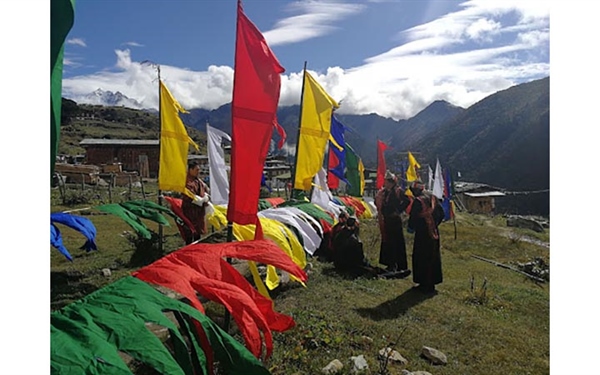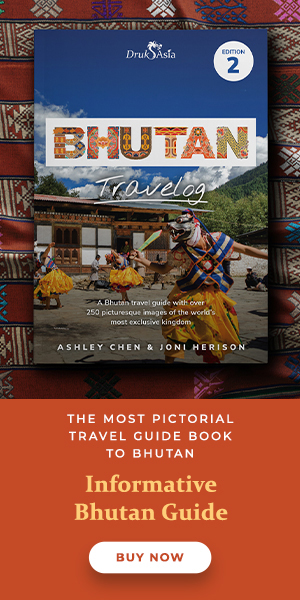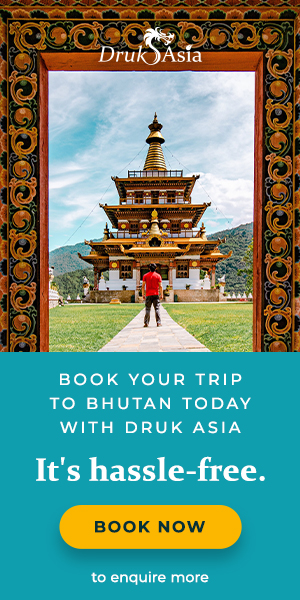The highlanders and ethnic minorities in Bhutan
Some ethnic groups are undergoing rapid changes and their distinctiveness is gradually eroding with the deluge of modernization and globalization.

The alpine zone in Bhutan starts at a much higher altitude of some 4000m compared to just about 1500m on the Alps. Thus, trees in Bhutan grow at much higher altitudes than in Europe. The subalpine vegetation of stunted fir, spruce, and junipers gradually gives way to dwarf rhododendrons and other shrubs, flowering plants, and herbs in alpine meadows. It is in this terrain that many medicinal herbs, including the expensive caterpillar fungus, Cordyceps Sinensis, grow.
The alpine meadows make up the wide pastures for grazing highland animals such as yaks and sheeps. The meadows extend as far as snow lines leading to mountains perennially covered in snow. The main wild animals in the alpine region are pikas, marmots, blue sheep, musk deer, takins (Bhutan's national animals), and snow leopards. The nebulous, mysterious Yeti and the Michung are said to roam mostly in the alpine and subalpine regions of a big mountain in Bhutan.
The people living close to the alpine grasslands are mainly pastoralists as the land and climate turn less conducive for cultivation. However, wheat, barley, and buckwheat are cultivated by many highland communities. Radishes and turnips are also grown, the leaves of which are dried and used as vegetables in the winter.
LIVELIHOOD
Many highland communities have distinct sociolinguistic and cultural features, which differ from those of the midlands. To the north of western Bhutan are three highland communities of Laya, Lingshi, and Lunana.
They herd yaks, which feed on grass and dwarf bamboo, and their main source of livelihood is dairy products which they use to barter for other items such as rice, salt, clothes, and cooking utensils. During the summer, they graze their cattle in the mountain pastures, and during autumn before the snow closes their trade routes, they journey to the lowlands to sell their products.
These highlanders speak the local dialects which are not easily intelligible to an ordinary Dzongkha speaker. They have a very distinct culture of dressing and lifestyle making them more similar to Tibetan pastoral communities than to mainstream Bhutanese.
If you think that wearing dresses made out of sheep wools or yak hairs is unique, you'll be fascinated to learn that even their homes, large black tents are made out of yak hairs.
The women’s dress is a black skirt with brown vertical stripes, black jacket, a distinctive conical bamboo hat perched on top of the head, and adorned with silver jewelries including spoons hanging at back.
Men wear something similar, minus the jewelry, and have shorter skirts. Sadly, these cultural distinctions are fast disappearing as more people are getting influenced by the mainstream Bhutanese culture.
BHUTANESE MINORITIES – THE HIGHLANDERS
The two ethnic minorities of Laya-Lingshi and Merak-Sakteng are geographically and figuratively the crown of the Bhutan ethnic landscape. They share the commonalities of yak and sheep-based pastoral economy. They are both well known for their wealth of dairy products.
Both of these exotic communities' cultures origins can be traced back to Tibet. If the Laya-Lingshi people were cast away, the Merak-Sakteng lots were a runaway group, according to the stories of their origins. Their similarities may have a lot to tell us about cultural transmission just as their differences make us reflect on evolving nature of human perceptions, behaviors, and practices. Red, for instance, is the standard color of the Merak-Sakteng dress while black dominates the Laya-Lingshi dress culture.
In the meantime, the two groups, along with the Lhopas of the southwest and the Monpas of the south-central, make up the most archaic and exotic ethnic components of Bhutan. Their cultures are undergoing rapid changes and their distinctiveness is gradually eroding with the deluge of modernization and globalization. Hopefully, their unique cultures can continue to be preserved for generations to come.




